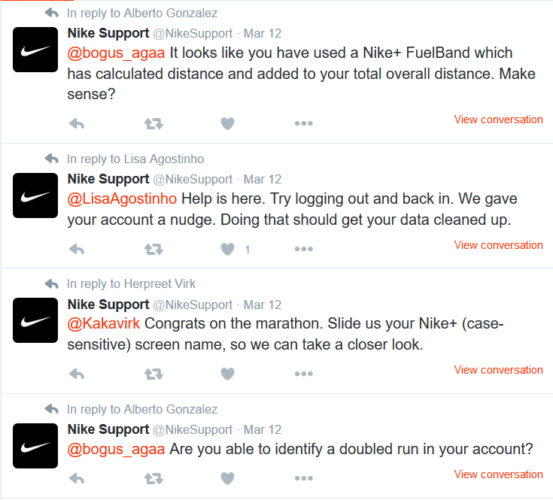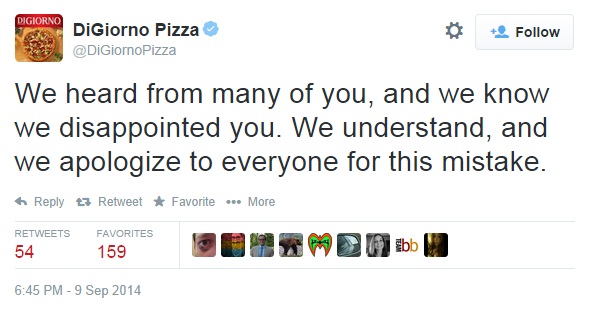Reputation management is an essential part of digital branding. From reviewing content before it’s posted to social media to monitoring accounts for signs of hacking attempts, every brand should have a plan for minimizing PR disasters. Here are 5 ways that you can protect your company’s reputation on social media.
5 Ways To Protect Your Company Reputation On Social Media
1. Respond To Every Inquiry
Social media should be a part of every brand’s customer service strategy. On top of publicizing your brand to the world, social media is also where you can showcase how quickly and efficiently your brand responds to its customers.
Secondhand reviews only give potential customers a snapshot of private communication with brands. But when an entire conversation between your brand and a customer is accessible and viewable online, potential customers can gauge the value of your brand for themselves.
What To Do:
When current or potential customers inquire about your products or services on social media, respond to them in a timely and courteous manner. Remember that your brand’s entire conversation history is available to those who search for it. So put your best face forward.

2. Admit When You’re Wrong
So you made a mistake on social media. Now what? Let’s face it, sometimes content does not go over as planned.
Perhaps our words have a double meaning that we are unaware of. May they are presumptuous, or completely taken out of context, or perhaps we assumed a hashtag meant something that it did not.
The fact of the matter is that even with a multi-step approval process, we cannot always guarantee that our posts will not be misinterpreted by someone, somewhere.
What To Do:
In the case of a major PR disaster, you can salvage your reputation by graciously admitting defeat. Issue a formal apology and continue to make amends until the dust has settled.

SEE ALSO: How To Build A Killer Identity
3. Spellcheck
Although a misspelled word here or there may not break a brand, a misspelled word that now means something else might.
Hubspot compiled a list of brands that should have triple checked their posts before pressing submit. In fact, these spelling and grammatical errors did not only affect posted content, but also physical goods (T-shirts, signs, etc).
Bravely, they even added themselves to the list; highlighting a blunder they once made on Twitter.
What To Do:
One of the easiest ways you can avoid mishaps on social media is to do a once over on your content before you schedule it to be posted. Spell Checker for Chrome and Grammarly are two popular online tools that integrate into browsers to proofread your entries across the world wide web.

4. Review All Content To Be Published
Along with spellchecking, it is a good idea for brands to have review boards for content to be posted. Such a board might consist of senior-level members or a mix of people at various levels but in the same department (Social Media, Public Relations, etc). Together, they review and, if need be, critique and revise posts before they are sent out.
What To Do:
A good way to avoid PR disasters entirely is to formally review all content to be posted on social media. Social media is not a rogue task but instead a vital part of the marketing efforts of an organization. So it is important to have multiple sets of eyes to review scheduled posts.
SEE ALSO: 6 Things That Can Hurt Your Brand
5. Hackproof Your Accounts
There are some things we cannot plan for.
We can monitor the people within our organization to prevent damage to our brand’s reputation. But we cannot foresee incoming attacks from those outside of our organization.
But unfortunately, even if your brand’s social media accounts are hacked, in the world of business you are still responsible for any damage to your reputation.
Our best line of defense against hacking is choosing strong passwords.
How Not To Choose Your Password:
- Brand1
- BrandStreet#
- CEO_Brand
- SocialPlatformABC
- BankName1234
Instead, Choose Passwords Like:
- Wh1l31P@nd3r3d (“While I Pondered”. Use snippets of quotes from your favorite books or stories and give them an extra layer of protection by adding special characters.)
- You can also get more clever and choose only the first or last two letters in each word in the sentence (or a combination of both, or only those in the middle, or every third letter, etc).
The more unnatural your process is for choosing your password, the more difficult it will be to guess (Technically, my “Wh1l31P@nd3r3d” example is not as difficult as it could be because there is a sense of logic in how I chose the words – i.e. numbers and special characters as letters. But such passwords come up as “medium” or “high” level difficulty on most sites).
What To Do:
Choose stronger passwords for your social profiles. The rule of thumb on password difficulty is the more valuable the account and sensitive the information, the harder the password should be. This includes financial accounts (Bank accounts, Paypal, etc) and social media accounts.
Tip to remember: Write down passwords instead of emailing them to yourself or storing them on your computer (Write them somewhere that only you or members of your team have access to).

In Conclusion:
A brand’s reputation can make or break its ability to acquire new customers or even keep old ones. Safeguard your reputation by paying attention to what is being posted on your brand’s social media accounts.
What kind of reputation management strategy does your brand currently have? Are there any others you recommend?











